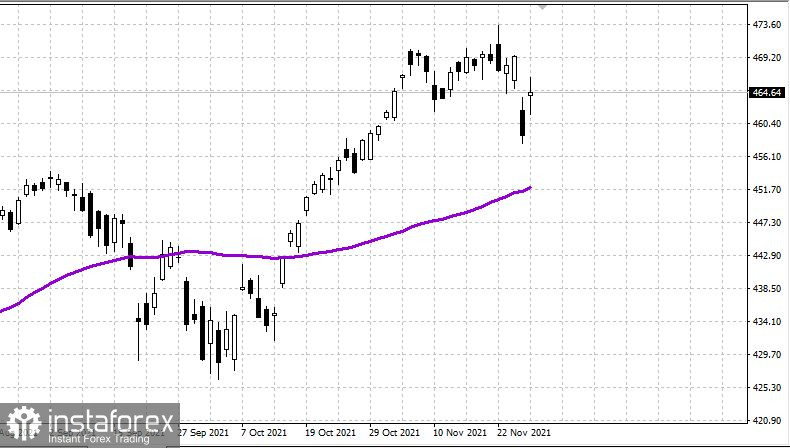
The US stock market saw the strongest drop on Thanksgiving Day. Notably, in my review, I warned about this possibility. In a thin market, many investors decided to lock in profits near the yearly highs. As a result, the stock market sank by 2.5%, affecting the sentiment. At the opening of the week after the holidays, the stock market showed an upward rebound, halting its decline. However, the correction has not been completed. The future trajectory of the stock market depends on large funds. It is not clear yet whether they are willing to push the market higher or they are more prone to close positions. This week, market participants are expecting reports on employment and PMI indexes in the United States for November. This data may also affect the market. One of the reasons for a decline in the equity market was the emergence of a new coronavirus variant –omicron. The news on the epidemiological situation may also have an impact on the stock market. apart from that, investors are concerned about high inflation in the US. The Fed will hold a meeting in 2 weeks. Besides, politicians will discuss in Congress a new increase in the US debt limit.
Weekly results of the main US stock indices:
The Dow was trading at 35,800 - 35,140. It lost 660 points or 1.7%
The NASDAQ composite was trading at 15,840 - 15,780. It declined by 60 points or 0.4%
The S&P 500 was trading at 4,700 - 4,655. It tumbled by 45 points or 1%
Outlook
The Dow is likely to trade in the range of 34,800 - 35,500
The NASDAQ is expected to remain in the range of 15,600 - 16,000
The S&P500 is projected to stay in the range of 4,600 - 4,700
Conclusion. In the future, the Fed will have to tighten its monetary policy, namely raising the key rate to curb inflation. A slowdown in the US economy is also inevitable, which may trigger a big correction in the stock market. A steep decline in the US market on Thanksgiving Day is the first alarming bell that the market may soon enter the correction phase, ending its long rally. It could also be the end of the current economic cycle.





















